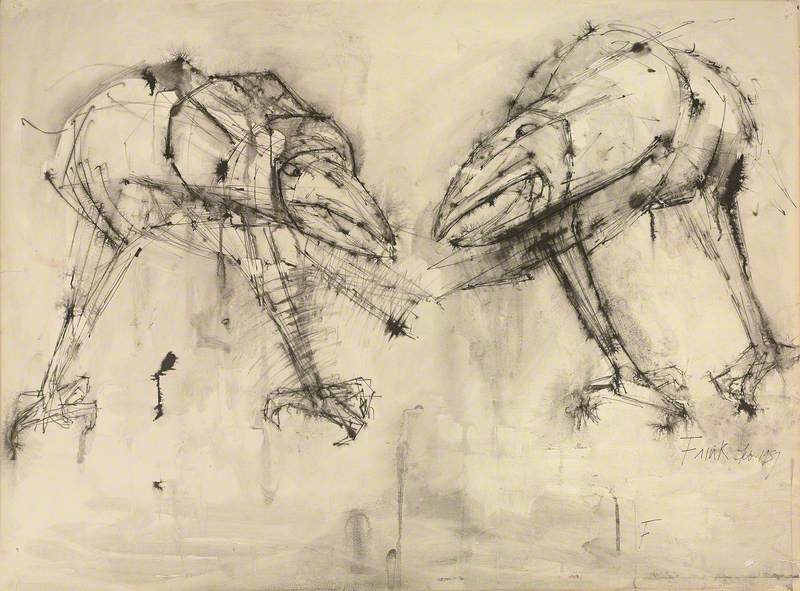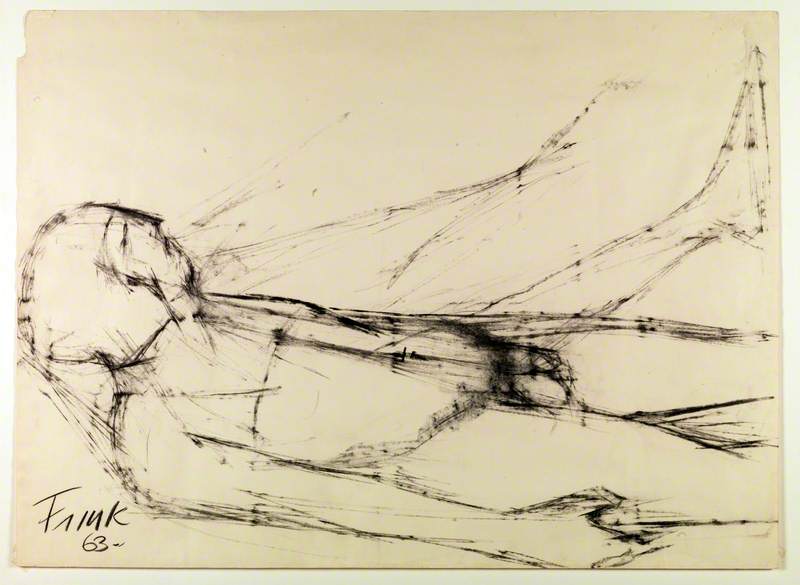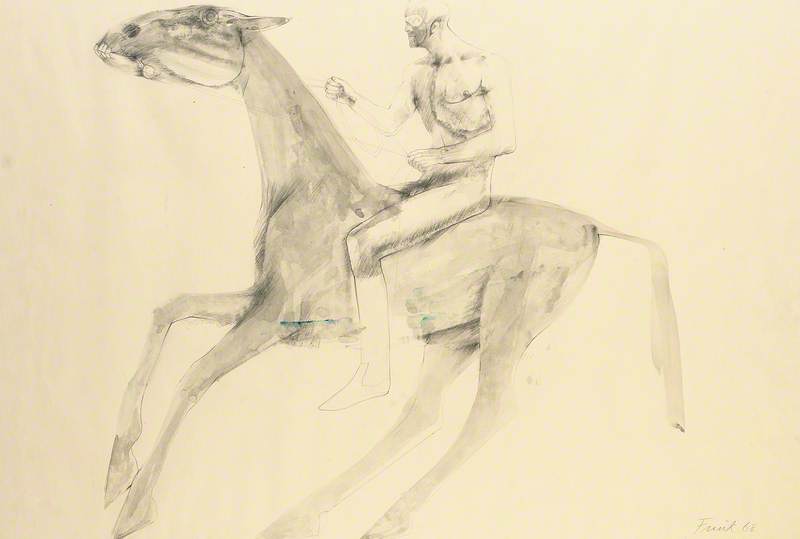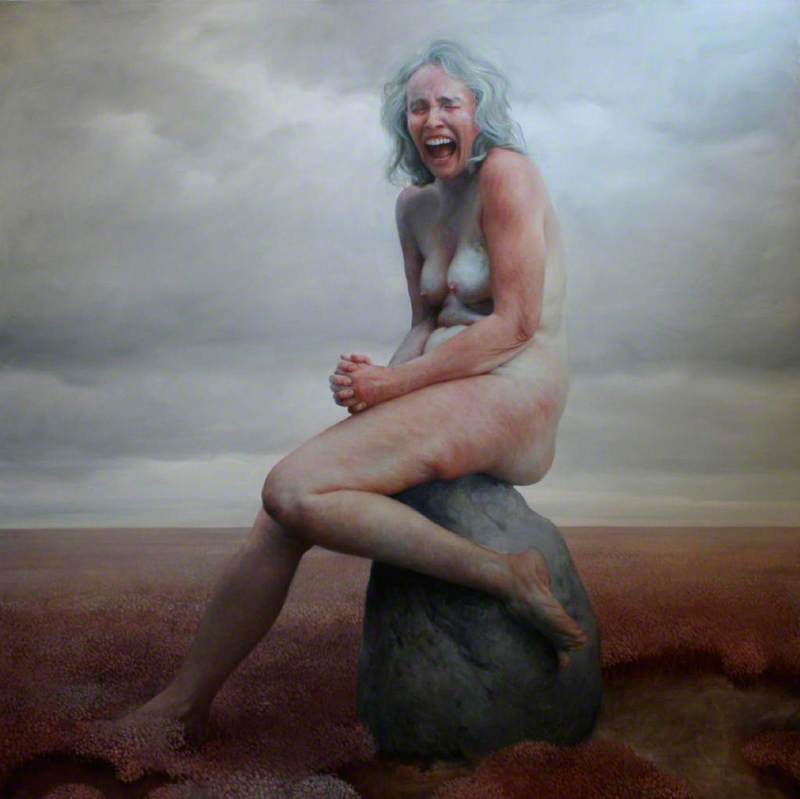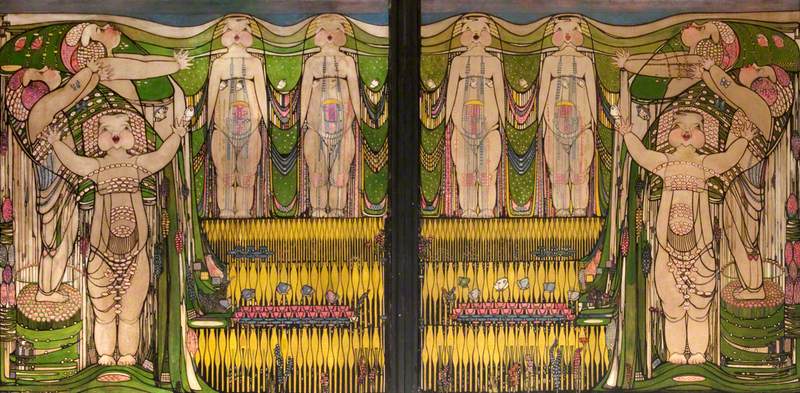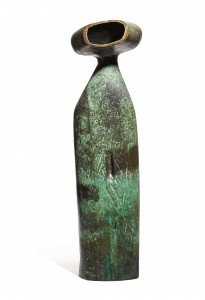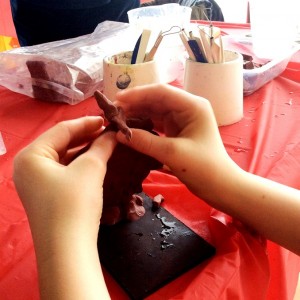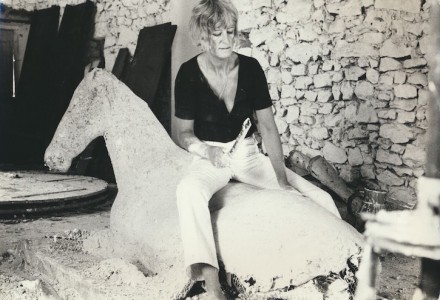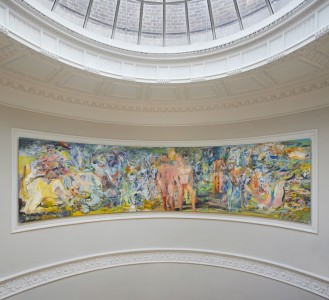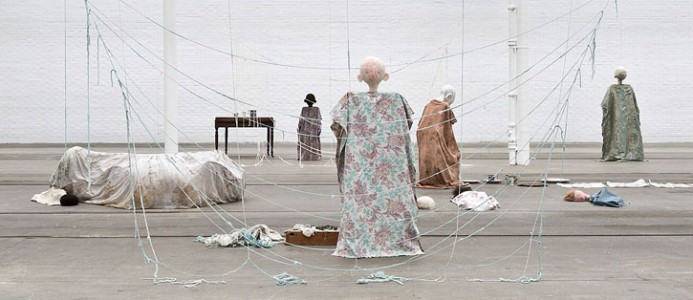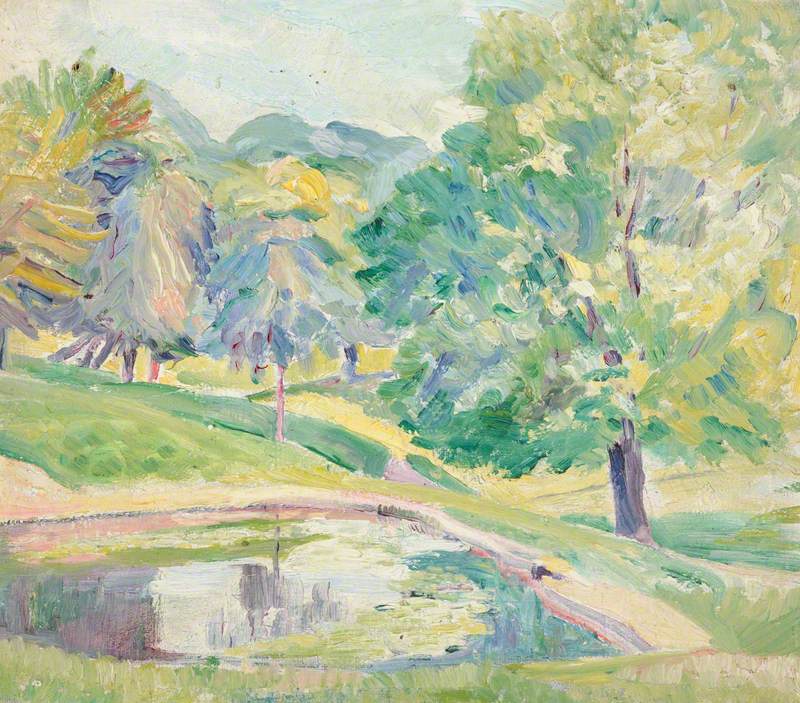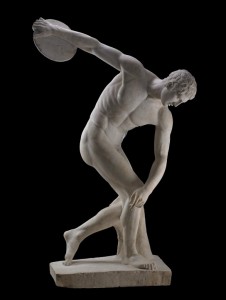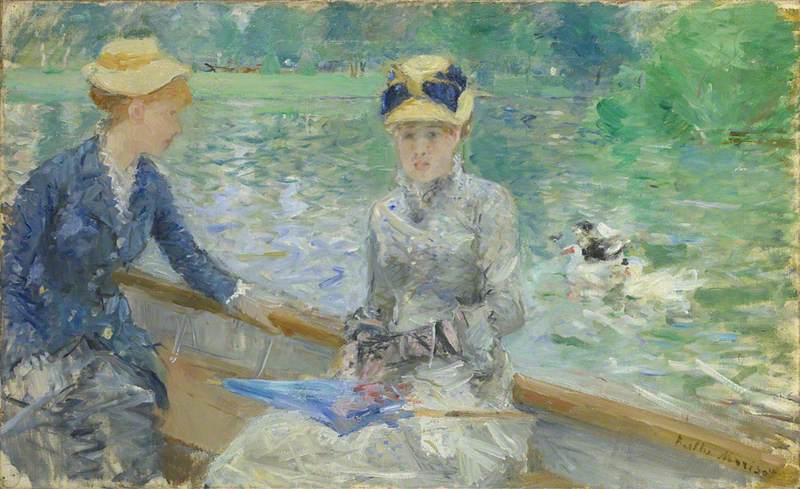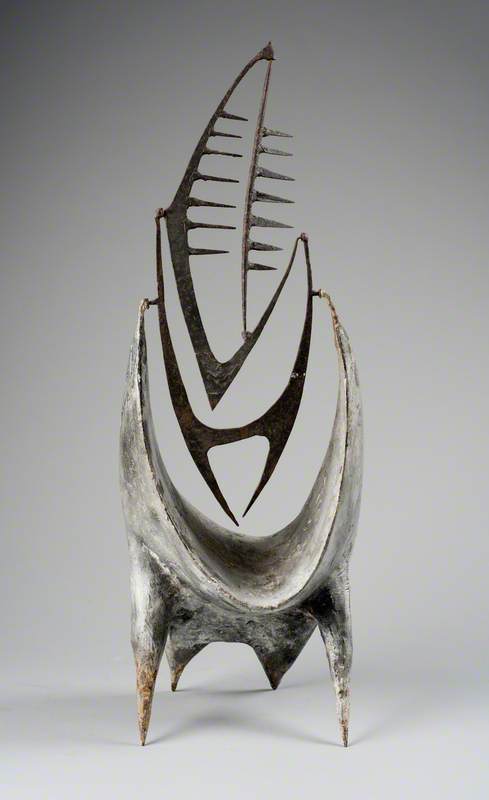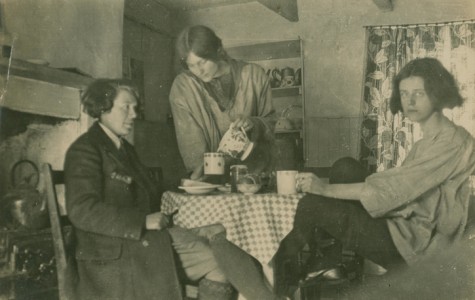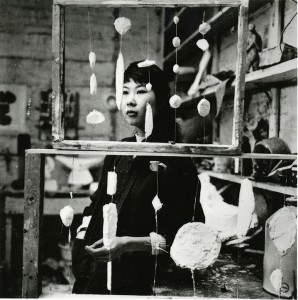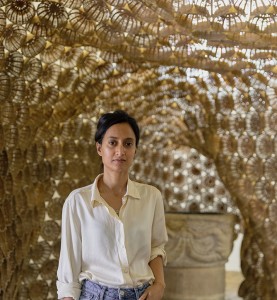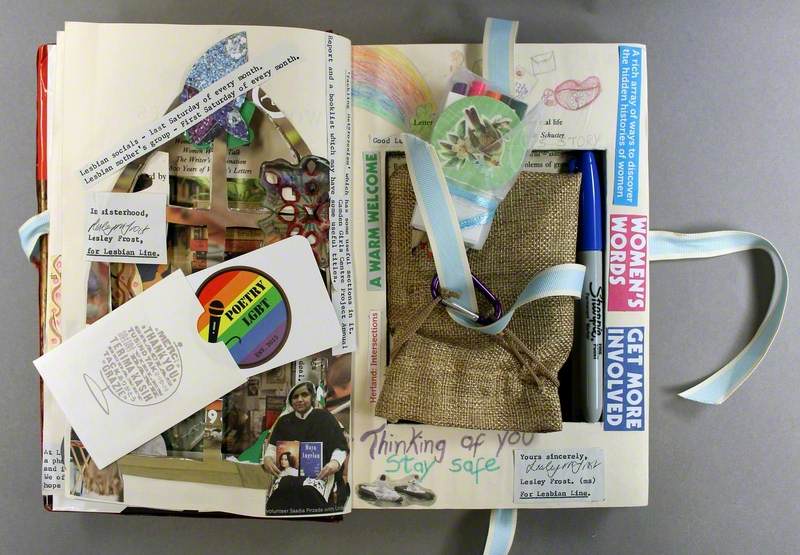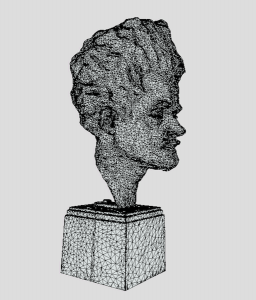The sculpture of Elisabeth Frink (1930–1993) ranges from male figures and disembodied heads to horses, eagles and other animals. Some are brutal and some frightening – conveying the physical power of the subject and evoking an emotional response in the viewer. The expressiveness of her surfaces serve to heighten this; working the plaster over and over again with her own hands rather than employing studio assistants, Frink developed her own signature style in bronze which marked the energy she put into making her sculptures.
Her resolution to work in bronze in the figurative tradition was in opposition to the fashion of the time, which tended more towards the abstract and the use of experimental media (epitomised by artists such as Anthony Caro and Eduardo Paolozzi). When the fashion for abstraction took hold in the 1960s, Frink moved to France where she concentrated on her own work and refused to be influenced by the London art world. Because she set herself apart in this way, Frink has sometimes been overlooked in the past. But a spate of recent exhibitions has marked an overdue
While Frink is probably best known for her sculptures, which can be seen throughout the UK in town centres and religious buildings such as Salisbury Cathedral, she was also a superb draughtsman. Central to The Ingram Collection’s significant holding of Frink’s work are 18 drawings that we are delighted to display on Art UK. Reflecting the breadth of the major themes in the artist’s work, here are a few collection highlights:
Frink’s earliest works of the 1950s were images of birds. Their expressive movements and sharp features such as their beaks and claws came to symbolise for Frink feelings of panic, tension and aggression. This drawing of birds ready to fight shows her skill in observing their nature. She manages to convey feelings of hostility and aggression not only through the imagery but also through her use of pen and ink – the spiky lines and conjoined dots all add to the uneasiness.
Frink grew up near an air base. As a child during the Second World War, she famously witnessed bombers fighting in the skies above her or returning to the base in flames. The images of flying, fighting and falling stayed with her; one of her major preoccupations as an artist being the relationship between the heroism and failure of men. Fallen Warrior is part of a series exploring this very theme. The male figure is depicted falling or spinning through the air.
The menacing subject of this work is derived from an image of General Mohammed Oufkir, whose dark glasses symbolised for Frink his ‘blind stare’. Holding various positions such as Interior Minister, Minister of Defense and Chief of the Armed Forces, Oufkir was a powerful figure in Morocco during the 1960s and 70s. Leading government-sponsored efforts to repress political protests through killings, disappearances and show trials, Oufkir was convicted for the murder of Mehdi Ben Barka – the leader of the Moroccan Independence Movement. A supporter of Amnesty International, Frink was profoundly affected not only by her own experience of war but also by the stories of the French farmers she met who were forced to leave Algeria due to the Algerian War. The artist identified strongly with human rights issues and felt compelled to produce images of Oufkir. Here his lips barely cover his teeth, rendering him particularly predatory and sinister.
This is one of the earliest drawings in Frink’s 'Horse and Rider' series. Her affection for horses stemmed from her childhood in Suffolk, where her father was a keen horseman, but it was her move to France in 1967 and her discovery of the horses of the Camargue that inspired her artistic interpretations. Her 'Horse and Rider' images are timeless, representing the shared qualities of both man and horse: intelligence, speed, courage and beauty. Both horses and men are recurring subjects in Frink’s work.
The Ingram Collection’s holding of drawings by Frink demonstrates the powerful themes she intended to evoke and her many influences and preoccupations. Clearly more than preparatory studies for sculptures, these drawings are works of art in their own right – a testament to the artist who put so much of herself into every work she produced.
Jo Baring, Director, The Ingram Collection of Modern and Contemporary British Art
The Ingram Collection is a not-for-profit organisation working in partnership with galleries, innovative spaces, new talent and marginalised artists to bring art to the widest possible audience. The calibre and breadth of the collection, together with its active lending policy, means that The Ingram Collection is now recognised as one of this country’s most significant and publicly accessible collections of modern British art.
